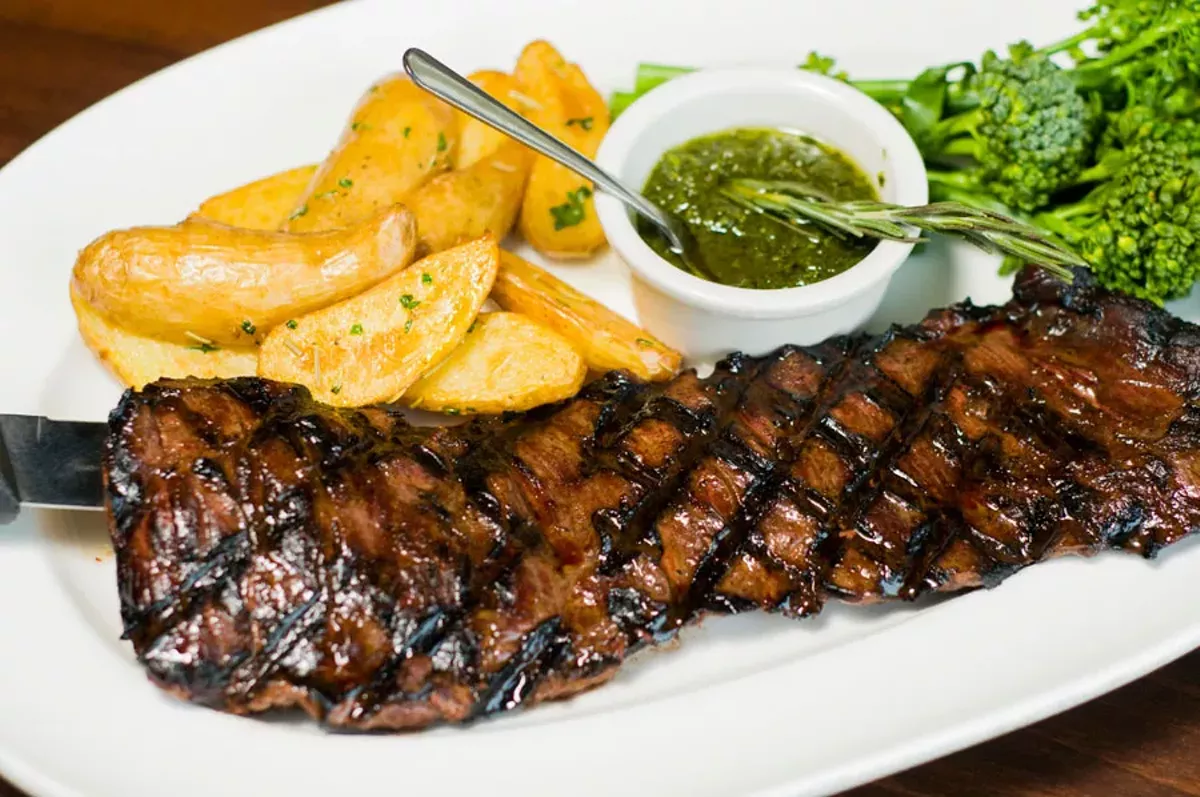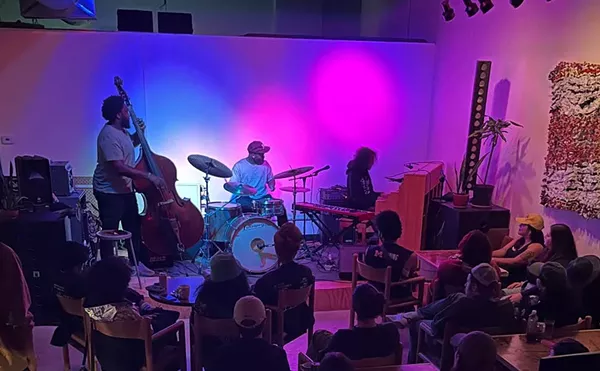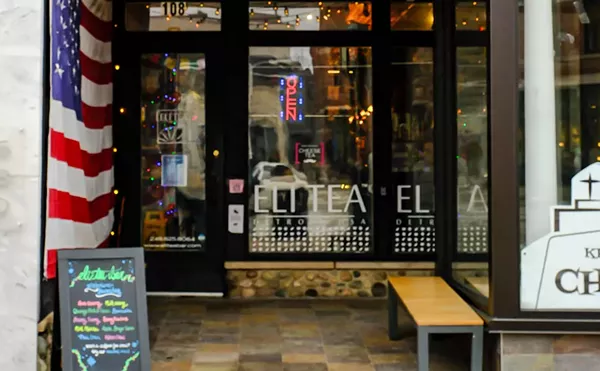Bolero Latin Cuisine is a restaurant that fills a pretty big and obvious hole when you look around metro Detroit's food scene, offering the flavors of South America.
It started as the second project of Vicente Fox, owner of downtown Detroit's Vicente's Cuban Cuisine, along with executive chef Roberto Caceres and Caceres' son, Robert Caceres, who served as general manager. They worked for about a year to open Bolero, but some sort of disagreement led to the Cacereses' quick departure around a month after the restaurant opened in early December. (Both parties declined to comment.)
Regardless, it's the Cacereses' recipes, who hail from Chile, and much of the menu covers turf in and around it. But as the name implies, this a Latin cuisine tour. "Latin" extends beyond South America, and at Bolero it includes Spain. And that's arguably the geographical corner of the Latin world in which the restaurant is at its best.
Roberto Caceres brought over his paella recipe book, but included a new version called paella en tinta. As is the case with paella, this one is a bivalve-heavy jumble of rice, mussels, oysters, clams, lagonista, scallops, calamari, and aromatics like red peppers, onion, garlic, tomato, parsley, and much more.
What sets this apart is the inclusion of calamari ink, which leaves the dish covered in a jet black tint. Of course there's heavy presence from the aromatics and paprika. But what's driving this version is the calamari ink, which holds glutamic acid and imparts a complex, umami-rich flavor that is really, when it gets down to it, one of the more difficult things for a food writer to describe. It will, however, add a lot of depth to a dish that's not known for being thin to begin with. And that makes for something worth exploring.
Aside from the paella, Bolero pushes its ceviche, a Peruvian dish composed of sliced fish that's "cooked" by marinating it in citrus — usually with some combination of lemon, lime, and orange juice — and flavored with cilantro, onions, peppers, and salt. Bolero serves its ceviche clasico with dollops of whipped sweet potato, corn, and a large piece of garlic bread. If you've tried ceviche in southwest Detroit, this is a little different — no imitation crab meat or other pre-cooked fish here.
The menu also offers around a dozen tapas, or small plates, all of which come with fairly generous portions — a good thing, as each visit to Bolero cleared $100 for two people. The most interesting of the tapas is the Peruvian papas a la huancaína, composed of two medium potatoes that are coated in a mustard-colored, creamy huancaína sauce that tastes nothing like mustard and is made with mild yellow peruvian peppers. It's an intriguing presentation, as a hard boiled egg comes ensconced in the potato with a dollop of shredded black olives on top.
The large stalks of grilled asparagus with citrus cilantro is another solid tapas option, as is the picanha. The latter arrives with a chimichurri sauce and comes in a large enough portion of slices of salty, tender top sirloin for three or four to enjoy as an appetizer. For the uninitiated, chimichurri is a staple Argentinian sauce made with olive oil, red wine vinegar, parsley, garlic, onion, and more that's typically applied liberally on Argentina's incredible beef.
The chimichurri should also be coated thick on the entraña de novillo entree, which offers a sizable portion of Argentinian skirt steak. Back into the Peruvian part of the menu, the pollo latino arrives with big hunks of moist chicken in an herby and salty mix that puts the flavor of the Peruvian aji amarillo pepper on display. It stands out, even among the olive oil, cilantro, garlic, carrots, and peas, all of which is simmered in beer and chicken broth.
Bolero's menu is meat-heavy, but there are enough tapas and salad choices that a vegetarian could be satisfied — the ensalada de palmitos is a flavorful composition of Brazilian heart of palm arugula, cucumbers, pomegranate seeds, and more tossed with a balsamic vinaigrette.
The wine selection is large, but if you're familiar with Vicente's then you know that they can mix a mean sangria, and the red and white are both good choices and arrive with requisite hunks of fruit bobbing in the sweet mix.
For dessert, we tried the super moist, light, spongy tres leches cake, which is made from scratch in-house, and stands up next to any I've tasted in Southwest Detroit. But like most everything at Bolero, it's of a corner of the Latin world that's less familiar in Detroit, and that makes it worth checking out.








